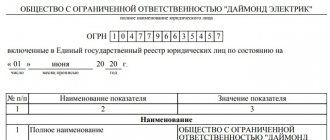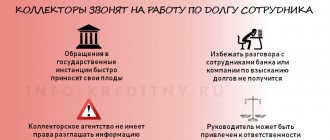General provisions on bankruptcy of a developer
Bankruptcy of developers falls under the provisions of the federal law “On Insolvency (Bankruptcy)”. Paragraph 7 specifies all the rules governing this procedure. Insolvency refers to the inability of a construction company to fulfill the requirements of creditors - under equity participation agreements (hereinafter referred to as DPA), or for obligatory payments (for example, taxes).
A construction company is declared bankrupt from the moment bankruptcy proceedings are introduced. Until this moment, the company is not bankrupt. It is at the stage of bankruptcy proceedings that the developer’s management is removed from management. All powers are transferred to the bankruptcy trustee.
The developer automatically becomes a debtor, as he is unable to fulfill his obligations to the participants in shared construction. The category of participants includes: individuals, commercial organizations, public legal entities. At the same time, citizens in the process of restoring their rights enjoy a number of preferences compared to some participants in shared construction.
Who can initiate bankruptcy of a developer?
The shareholder himself can initiate bankruptcy of a construction organization if the developer has a debt exceeding 300,000 rubles, which he has not repaid for more than 3 months. However, in practice this is quite expensive and difficult, even if you create an initiative group. Therefore, it is easier to apply to the state supervisory authorities at the local and regional level (for example, to the Department of State Housing and Construction Supervision), as well as to the Fund for the Protection of the Rights of Citizens - Participants in Shared Construction. These entities have the right to file an application to declare the developer bankrupt to the arbitration court.
It happens that government authorities themselves initiate bankruptcy proceedings against a construction company. This usually happens when the results of one or another inspection reveal signs of financial insolvency of a construction company. Another option is when the developer himself initiates the bankruptcy process.
The order of satisfaction of claims in case of bankruptcy of a developer
The requirements of participants in shared construction are satisfied in order of priority - there are 4 stages in total. The developer bankruptcy law places individuals in third priority. Before this, the requirements are satisfied in the following order:
- The first priority is the persons to whom the developer is liable for causing harm to life and health.
- The second priority is the employees of the development company, in respect of whom the employer must fulfill the terms of the employment contract in terms of payment of severance and maternity benefits, arrears of wages, and other payments.
The third queue consists of several separate queues. Only after settlements with these persons does the rest of the creditors take turns. This is one of the most important advantages enjoyed by ordinary shareholders - individuals who have invested money in shared construction.
What is a register of creditors' claims
We are talking about a unified system in which information about creditors and their demands is recorded. A special part of the register contains requirements for the transfer of residential premises. The bankruptcy trustee sends notifications to shareholders and other creditors. In bankruptcy proceedings, the period for entry into the register of creditors is 2 months.
The shareholder has two requirements to choose from: monetary - the developer repays the debt in cash, with the return of the amount paid under the DDU. The second option is the requirement to transfer the premises - the living space, parking space, and other types of buildings are transferred to the shareholder. You can put forward both demands at once, the main thing is that they do not duplicate each other. Claims not included in the register are considered unproven and therefore remain outstanding.
The requirement to transfer the premises (entire apartment or room) can be put forward if the construction of the house is at the completion stage. The register of claims for the transfer of premises is, in fact, part of the general register of creditors' claims.
A monetary claim is a shareholder’s refusal to execute a share participation agreement at the stage of bankruptcy proceedings. It is also put forward in accordance with the invalidity of the contract (non-conclusion).
How to join the register of creditors' claims
Inclusion in the register is carried out only through the court. The demand itself is sent to the arbitration court, and its copies with comprehensive evidence are sent to the arbitration manager and the developer (at the observation stage). If the shareholder does not do this within the allotted time, he risks being left without compensation, since there is a priority order in satisfying claims.
The arbitration court sets a date for the hearing. The demand sent by the shareholder will be considered; if no inconsistencies are found, then it will be included in the register. There is no other way to be included in the registry. The claim is included in the register based on the ruling of the arbitration court.
Money or meters?
There are several options for requirements for a developer in case of bankruptcy. Since August 15, 2011, in accordance with the amendments to the federal law “On Insolvency (Bankruptcy)”, not only monetary claims can be made against the developer, that is, the amount paid under the DDU can be returned, but also the transfer of housing can be demanded if the house is completed, but not yet commissioned. If the house is not completed, then the shareholder also has the right to receive the unfinished object. In all three cases, you must file a claim with the arbitration court, and the lawyer will add you to the register of creditors. However, it is impossible to make both demands. That is, you must clearly understand what goal you are pursuing: getting an apartment or money.
Contacting an insurance company
If the developer has liability insurance for failure to fulfill obligations to construction participants, shareholders have the right to apply for compensation to the insurance company. You can find out that liability is insured from the contract with the developer or from other documentation.
The insurance company will request confirmation of the occurrence of the insured event. Such confirmation is: a decision of the arbitration court to declare the developer bankrupt and to launch bankruptcy proceedings, as well as an extract from the register of creditors' claims, which reflects the amount of all payments that the developer must make in relation to the shareholder.
The bankruptcy procedure for a developer during shared-equity construction is a lengthy process. The insurer will check the information and then decide whether to pay compensation. In case of receipt of compensation or part thereof, the shareholder notifies the bankruptcy trustee about this. Accordingly, the amount of claims from the register of creditors is reduced by the amount received in the form of insurance compensation.
Developer bankruptcy procedure
In case of bankruptcy of the developer, it is possible to introduce an external management procedure, conclude a settlement agreement and conduct bankruptcy proceedings.
With external management, the court appoints a manager, who effectively becomes the head of the construction organization. His tasks include: restoring the solvency of the company and completing the construction of the house. The option of concluding a settlement agreement is possible when the developer and the shareholder come to some kind of agreement in court, as a result of which the construction participant can receive a certain amount in a short time, but at the same time he will have to make some concessions to the developer. The procedure for external management and the conclusion of a settlement agreement are rare in practice.
Most often, when a developer goes bankrupt, bankruptcy proceedings are used, the essence of which is to sell all the property of a construction organization at auction and collect debts from the debtors of the developer himself. The funds received are then used to pay off creditors, including equity holders. How long this procedure will last is decided by the court. According to the law, bankruptcy proceedings are introduced for a period of up to 6 months, but the judicial authority always has the right to extend this period for another six months. And most often the court actively uses this right, so there is no need to say that everything will go quickly and easily.
How to recognize ownership of premises
This is possible if the developer has already received permission to put the apartment building into operation. In this case, it is important that the developer and the participant in shared construction sign a transfer deed, or any other document on the transfer of residential premises.
If this requirement is met, the shareholder submits an application to the arbitration court. Documents related to the case are attached to the application. Before submitting an application, you must pay a state fee in the amount of 6,000 rubles (Article 333.21 of the Tax Code of the Russian Federation).
In 2021, the real estate market will undergo certain changes, which we recommend that you familiarize yourself with.
Escrow accounts in shared construction
The bankruptcy of a developer during shared-equity construction is an extremely complex problem that required drastic measures. Some developers actually went bankrupt due to improper conduct of their activities, while others deliberately brought themselves to bankruptcy. In some cases, citizens contacted outright scammers when they abandoned the construction of a house at the foundation pit stage.
Since July 1, 2021, the vast majority of development companies have not lost the right to accept money from shareholders directly. A ban is also imposed on payment for an equity participation agreement through third organizations - subsidiaries of the developer company. From this date, interaction between equity holders and developers is carried out using escrow bank accounts. The interaction mechanism is as follows:
- The company and the shareholder sign an agreement.
- The shareholder deposits the cost of the apartment into a specially opened escrow account.
- The money is kept in the account until the keys to the apartments are issued.
- The developer gets access to the money only if he fulfills his obligations to the shareholders.
Thus, neither bankruptcy nor fraudulent actions of the developer will cause ordinary shareholders to lose money. If the company stops construction, the person has the right to withdraw his money from the escrow account at the bank. Therefore, the developer will have to build houses using loans or investments from investors.
When escrow accounts are not used
Until July 2021, developers used escrow accounts on a voluntary basis. This gave the company great advantages - the level of trust in front of potential shareholders increased significantly. Exactly one year later, the use of escrow accounts became a requirement. The requirement is reflected in Art. 3 214-FZ.
The problem was that credit institutions were reluctant to open such accounts for companies, considering such operations unprofitable. The developer could rebuild several floors and even sell the apartments, but he could not continue construction, since there was no agreement with the bank to open an escrow account. A solution was found by the Government, which allowed companies to accept money for payment of DDU into their own accounts in the following cases:
- Number of areas sold - the developer has sold at least 10% of apartments, non-residential areas and parking spaces.
- Degree of readiness of the object - 6%, 15%, 30% (depending on the category and significance of the object)
These criteria can be clarified in order not to be deceived in the unified housing construction system. These measures were introduced to solve the problems of developers and to meet the deadlines for building a house. Otherwise, companies would have to freeze construction and look for money to continue construction.
Sources:
- Federal Law “On participation in shared construction of apartment buildings and other real estate and on amendments to certain legislative acts of the Russian Federation” dated December 30, 2004 N 214-FZ (latest edition) - link.
- Federal Law of October 26, 2002 N 127-FZ (as amended on December 27, 2019) “On Insolvency (Bankruptcy)” - link.
- Decree of the Government of the Russian Federation dated April 22, 2019 No. 480 - link.
about the author
Anatoly Darchiev - higher education in economics with a specialty in “Finance and Credit” and higher education in law in the direction of “Criminal Law and Criminology” at the Russian State Social University (RGSU). Worked for more than 7 years at Sberbank of Russia and Credit Europe Bank. He is a financial advisor to large financial and consulting organizations. Engaged in improving the financial literacy of visitors to the Brobank service. Analyst and banking expert. [email protected]
Is this article useful? Not really
Help us find out how much this article helped you. If something is missing or the information is not accurate, please report it below in the comments or write to us by email
Consequences of developer bankruptcy
It may turn out that the funds received as a result of the sale of all the developer’s property at auction will not be enough for everyone. Then the money will be divided between shareholders proportionally, depending on how much each of them paid for the future apartment. In this case, the money will be returned to you only partially. In this situation, you can also try to get help from the State Compensation Fund for Shared Construction.
The worst option: if it turns out that the construction company has nothing at all. This is possible when property is registered under shell companies and other illegal schemes for siphoning money are used. The bankruptcy proceedings will end here and it will be officially recognized that there are no funds and it is not possible to satisfy the demands of the construction participants. And this picture, unfortunately, is very common these days. The introduction of escrow accounts into the work scheme of developers from July 1, 2021 may change the current situation for the better.
Thus, if the developer is declared bankrupt, you should not fall into despair and despondency. Currently, there are various mechanisms that allow both to complete the construction of objects and to compensate shareholders for their financial losses. The most important thing is your active actions and regular monitoring of the progress of the bankruptcy process. And the help of qualified lawyers will greatly increase your chances of success.
Comments: 0
Your comment (question) If you have questions about this article, you can tell us. Our team consists of only experienced experts and specialists with specialized education. We will try to help you in this topic:
Author of the article Anatoly Darchiev
Consultant, author Popovich Anna
Financial author Olga Pikhotskaya







